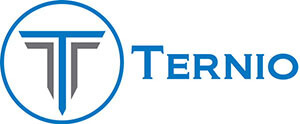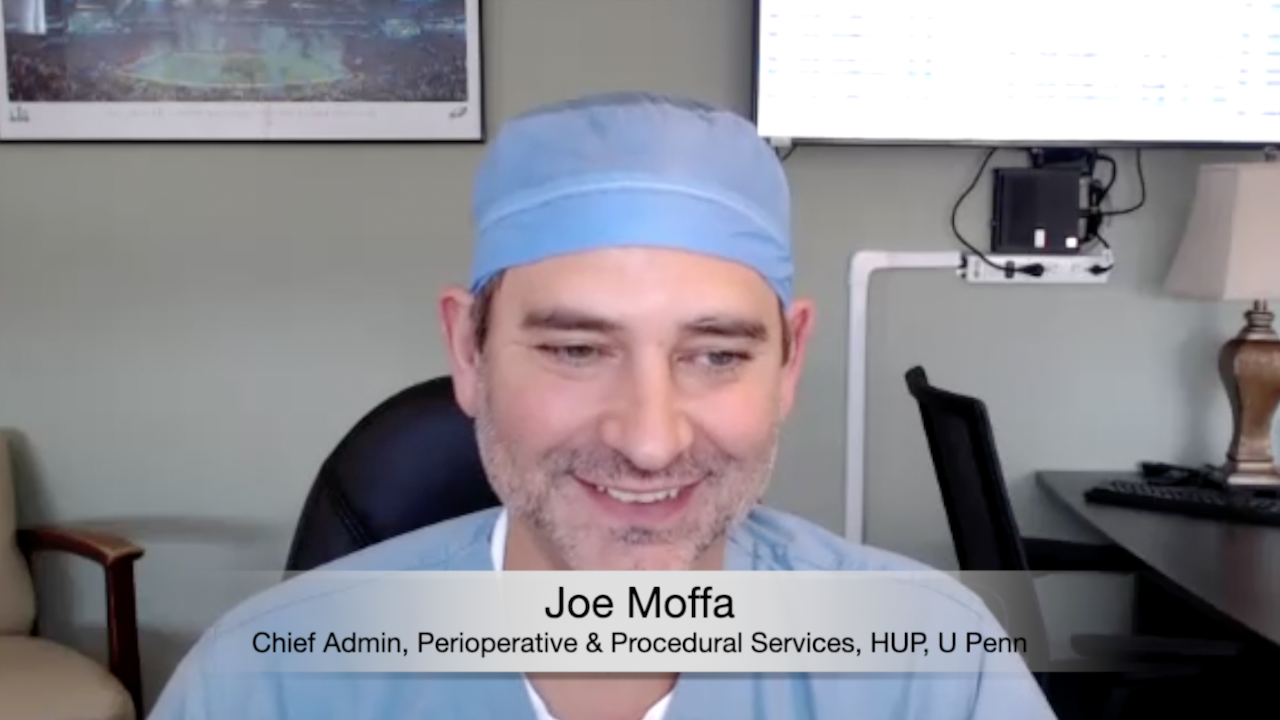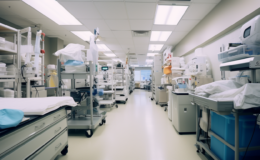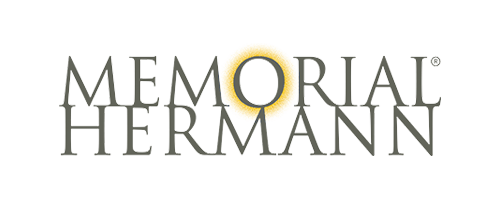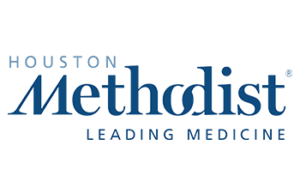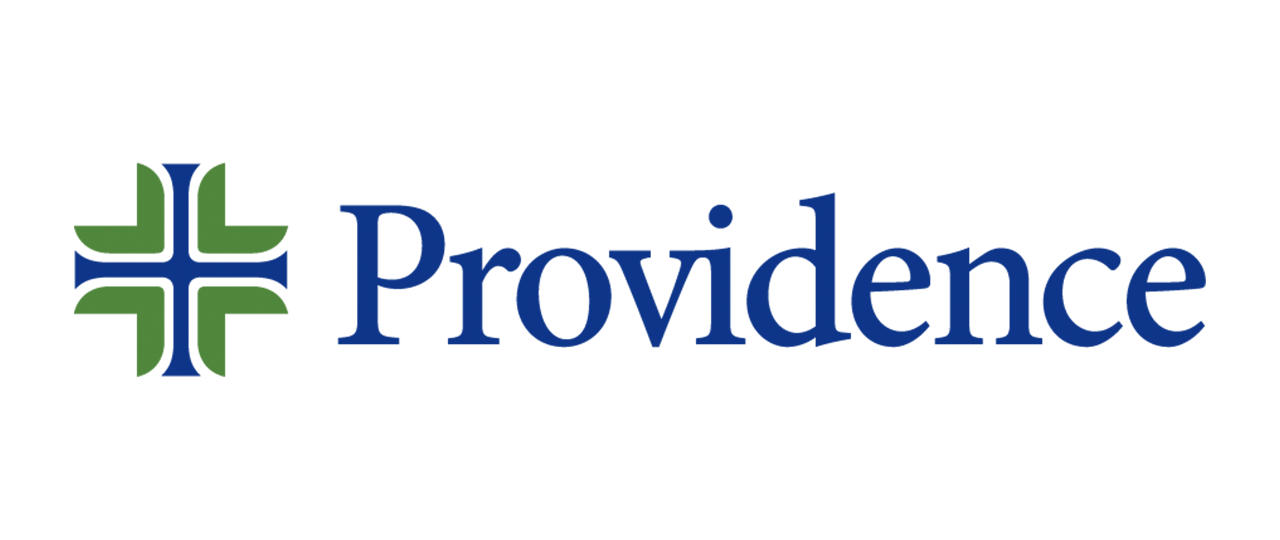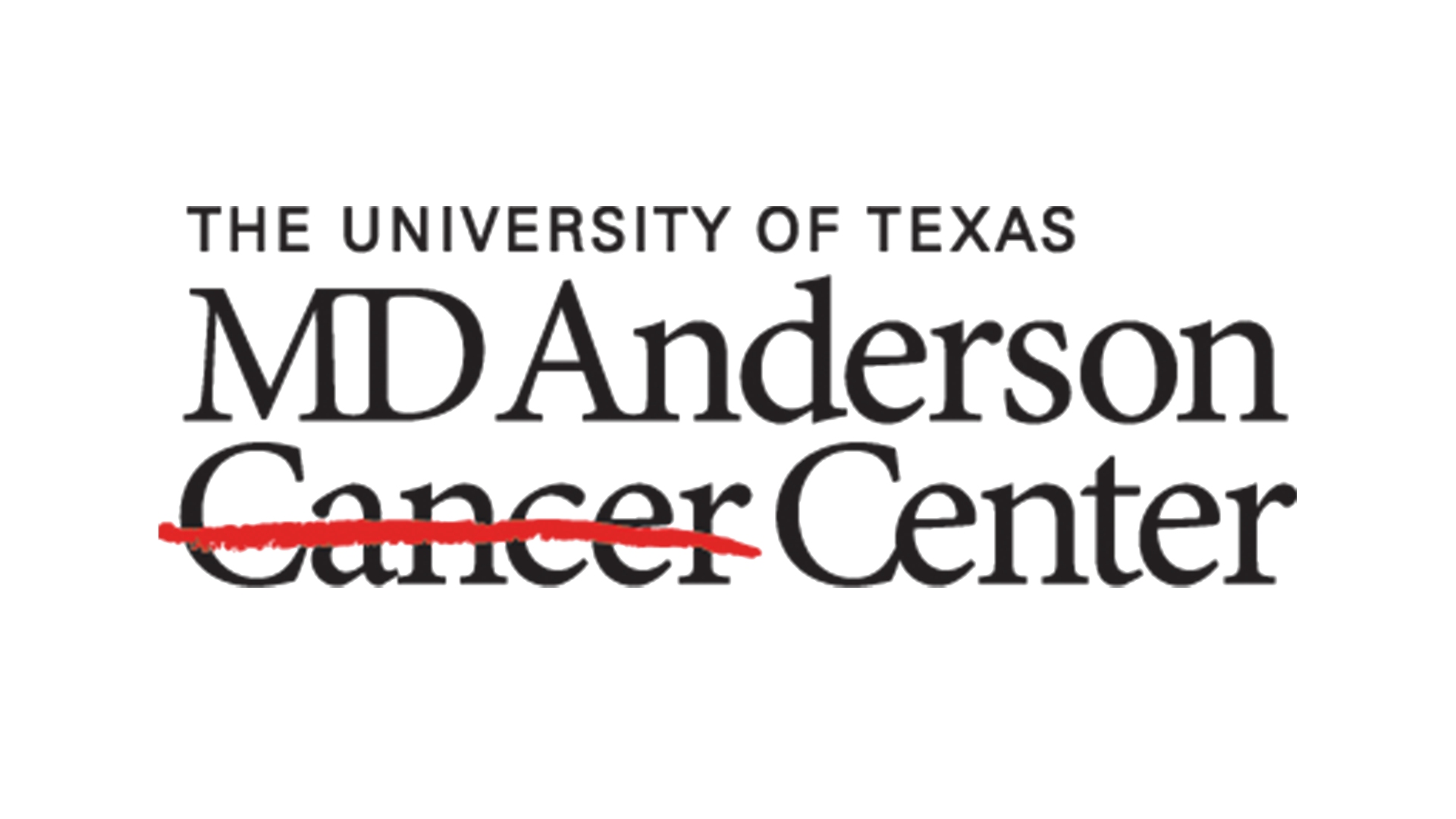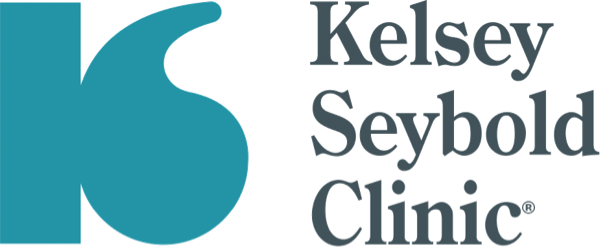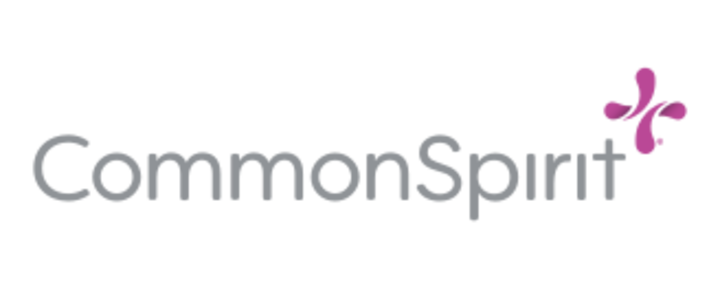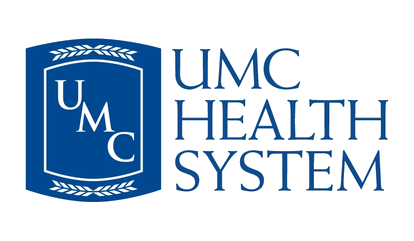A Conversation with Joseph Moffa, MSN, BS, RN, NE-BC, CCRN, ATCN
Expert Insights features conversations with healthcare professionals on topics related to innovations, challenges, and opportunities in the rapidly changing field of healthcare supply chain management.
Our guest for this episode is Joseph Moffa, MSN, BS, RN, NE-BC, CCRN, ATCN. Mr. Moffa is the Chief Administrative Officer for Perioperative and Procedural Services for HUP at Penn Medicine, University of Pennsylvania Health System.
Our conversation touches on the challenges of staffing, the role of data and technology in creating a more efficient surgical supply chain, and the ways in which this can have a positive impact on the patient experience and patient care.
The transcript and video have been lightly edited for clarity and brevity.
Ternio News: Joining me today, is Joe Moffa. Welcome to Expert Insights, Joe. Thanks for making time for me today. Now, you are the Chief Administrative Officer for Perioperative and Procedural Services, HUP at Penn Medicine, University of Pennsylvania Health System, correct?
Joe Moffa: …The HUP stands for Hospital of the University of Penn.
Ternio: Okay, that’s a title as long as many people’s job description. Did I get everything right?
Joe: Yes. You got it right.
Ternio: Good. So, Joe, let’s start out by letting people know who you are and how you got to be where you are. Tell us a little bit about your career journey, and how you ended up where you are in this in this role at U Penn.
Joe: Sure, my career journey is kind of unique in the fact that I started my career right out of Nursing School, and as a trauma ICU surgical intensive care nurse. And then I actually managed an ICU for a little while. Then I came down to periop and managed the PACU for 7 years, but also the pre-op area, the waiting areas, and I also opened a brand new 23-hour observation unit in that time span. Then I went on to direct the Penn Medicine transfer center for all of the Penn Medicine entities, and then also the patient flow bed management center for The Hospital of the University of Penn (HUP), and I did that for another person 4 years before coming back to periop as the chief administrative officer, and I’ve been back in periop, and in this position for the last 2 years. So, I have a broad range of experience within this hospital — I’ve been here 21 years — and know pretty much the entire hospital and a lot of different geography and different areas of the hospital. Plus, I’m clinical too, on top of that.
Ternio: So, that’s a pretty wide range of experience within the same organization. There are probably very few people who have the depth of insight into that organization as you do at this point with 21 years in. How would you describe your current role and responsibilities?
Joe: This role was created for me, in which I’m not only doing administrative work — I almost act like a CAO/COO of periop. Basically, when I got here, we restructured the periop services. And I have multiple directors reporting to me, including the perioperative EVS/ Transport/service partner, director. I have another director who directs our Instrument processing here, our anesthesia techs, and also a rad tech. That person reports to me as well. Our Director of Supply Chain reports to me, also our Director of Regulatory for periop reports to me as well. And then also we have a Director of Patient Flow for periop and also IT that reports to me. So even though I’m administrative I am also involved in overall Operations. I’m pretty entwined with the operations and what takes place here within periop. So, it’s pretty unique and probably more than just what an administration person would do, and I think my clinical background, helps with that as well.
Ternio: It sounds very demanding on the administrative side. I’m surprised that you have the bandwidth to accommodate the clinical work as well.
Joe: Yeah, it’s somewhat demanding. But you know, we’ve built a great team. So, you know, as we grow — and a lot of our directors are somewhat new to being directors —so, as we grow them as leaders, we are able to utilize them to do that work as well. And then, you know, we all work together as a team to get the job done to care for our patients in the best way possible.
Ternio: When we spoke earlier, a few days ago, you mentioned recent significant organizational changes that have taken place at U Penn. Can you share with us what that experience has been like, what the goals were for that reorganization, and whether you’ve achieved them —where you are right now?
Joe: I got back to periop 2 years ago and also my counterpart, who is the Executive Director of Perioperative Services — who is an anesthesiologist — we work together, and he started 4 months before me. We both have been at Penn; I’ve been here 21 years and I think he’s been here 19 years. He’s been in periop the whole time, but we work together to run perioperative service and to reorganize it. That was a change in itself because the former perioperative director was here probably over 40 years, maybe, so, you know that was a big change.
And then we also had some new leadership come in from our department alone. But in addition to that, we came off of teletracking navicare patient flow system and went full Epic for our patient flow module. That was the first large change that we had to make within periop. In addition to dealing with Covid as well, we also opened an off-site instrument processing center for supplies/instruments as well. And that was in February of 2020. We came off of teletracking in December of 2019. and then we opened a brand new $1.4 billion pavilion, which is a brand-new hospital, while still running the other hospital across the street in November of 2021. And in addition, within periop, we also absorbed EP and cath services, and echo within our sixth floor of our ORs, and then we also absorbed the neuroendovascular service as well, within periop. So, we basically have 3 floors of ORs and opened 47 brand new ORs over here.
In addition, we also manage the legacy ORs which we still run, probably about 5 to 6 ORs over there a day, plus we also manage outpatient endoscopy, connected to the hospital here on the fourth floor of our Perelman Center, in addition to a surgery center with 8 operating rooms, which is connected to the hospital as well at Perelman.
So, we managed all that, moved into this new building, had to get used to it, and then also stock our cores — and we have a third floor where we have supplies as well — and then we never stopped surgery, really. The only stoppage we made was on the Friday before we moved the first half of our ORs. We made our cardiac and neurosurgery — Urge/Emerge — which that doesn’t mean anything to them — they’ll still put plenty of cases on — and we moved our ORs in two weekends, and basically never stopped surgery. And all that, with, you know, the Great Resignation, on top of Covid and everything else.
So a lot of change, and not the changes bad, it’s good, but as you know it’s a lot on everybody at one time. But we pulled it off, and we’re starting to get settled finally.
Ternio: That amount of change in that short period of time certainly must have been challenging to you and your team. How would you describe the culture that you have there, in terms of its resiliency? Its ability to adjust to such changes?
Joe: Penn generally always had a culture of resiliency, just because It’s a very complex, complicated place, to work. Because, we see, the sickest patients, the most complicated OR cases, like most academic medical centers, probably one of the highest CMI and high acuity hospitals in the country. We’ve always been resilient but to do that, and have to get used to a brand new environment is a large challenge, especially since our ORs were always the same — we’ve built on them over the years, but they’ve been there for about I don’t even know 70 years — I don’t know how long — and you know for the staff that’s been there for a long time to go into this large change, to get used to the new geography, have to get used to a new case-cart movement system from the ISC opening or the offsite processing, and also, you know, getting used to different cores…
Not to mention we also turned over a lot of our surgical Chairs, which is unusual too, at Penn. A lot of people stay here a long time, so we have a new Chair of neurosurgery, a new Chief of neuro-endovascular, a new Chair of ENT, a new Chief of vascular, and also a new Chief of EOS …I can go on and on.
We have multiple new Chairs and chiefs, so that equals new surgical procedures. And they also bring a different experience and different doctors on board with them as well. So that was a pretty large change as well.
So, all that has been a challenge, but we’re doing well, and we’re starting to, you know, grow as we keep moving on.
Ternio: So as the dust settles, presumably you’re at the tail end of these changes and ready for a little bit more stability, I suppose. Are there remaining challenges that you’re focused on? Are there other things that are still keeping you up at night?
Joe: Well, we’re still in the process of other changes as well. For instance, we’re opening up a brand-new Gift of Life Donor Center, which is probably only the second or third of its kind in the nation. Basically, Gift of Life is going to partner with us and we’re going to utilize 3 of our legacy ORs, and patients that unfortunately have been pronounced brain dead at outside hospitals will transfer here and are going to utilize an ICU we used to utilize here, and then, when it’s time to harvest the organs, they will come down to our 3 ORs that we’ve dedicated to them, and we are partnering with them, as well.
We also are in the process of opening an X-Vivo center for lung in one of our ORs, and then also possibly an islet cell lab in one of our ORs, so a lot of big changes there. We’re also in the middle of renovating our Dulles OR for an endoscopy project. We’re just waiting on a project manager to complete that. We also opened Radnor surgery center, which is under our HUP license, and we have a dotted line to them, outpatient surgery center, which we work closely with. And then we’re also going to have — to most likely — move additional services back to our legacy OR, probably coming in the October – January 2023 timeframe, because we have to open more ORs for additional surgeons coming (and other reasons as well). So, a lot of movement, and still a lot of change still to come going forward.
Ternio: What do you your biggest operational improvement opportunities are right now?
Joe: Biggest operational improvements… So, we’ve been working on efficiency. Our first case starts have gone from — when I first got here, and John came on board — from about 14%, we’re up to about 71% in-room first case starts, which is probably one of the highest in the country. And for an academic medical center definitely at top tier.
We’re also working on our turnover in between cases where we’re in the 50-minute range. We want to get that down to 45 minutes, sometime soon, for cardiac cases we are around 60 minutes turnover range, but we want to decrease that as well.
We want to improve our preference cards, which helps improve efficiency. So, we’re working with PrefConnect for that, and that also helps with our turnover. And then we also would like to improve our overall incision time, as well. So, it’s not just getting into the OR in time which we’re doing pretty well right now — we’re actually doing real well — but we also want to get the case started, because you want to get the case moving along. And then the turnover between those cases — you want to improve upon as well. So, on top of that, we created a nice equation to show that we need to open more ORs because I think we were landlocked over at our legacy ORs.
In addition to more change, we’re opening more ORs —and the reason for having to probably move some services over to the other side again. We’re opening two ORs — additional ORs — in October, and we would open them sooner if we had the staff. But we have to hire and train. And another two additional ORs in January of 2023. And probably another EP lab. Another OR that we opened recently is a Radiation Oncology OR, which is in a different location on top of that, and we’re going to expand those OR days as well, and then we’re also going to open an additional EP lab in the October -January timeframe, which is most likely going to lead to us in January 2023 to need to open four more additional ORs as well in an effort to make everything fit and get everything done in a timely manner, because we want to make sure that not only are we, you know, completing our volume of cases, but we want to complete them in a timely fashion so our staff has a good quality of life and work-life balance, so we don’t lose more staff to, you know,… I don’t want to say easier jobs, but you know, less challenging jobs outside of our organization. Surgery centers and places like that.
Ternio: I want to talk a little bit about the subject of staffing because it’s obviously a big issue at hospitals nationwide. What’s your take on it? What challenges have you seen, and how are you positioning U Penn to compete for top-level staff.?
Joe: A lot of the movement has to do with money and work-life balance like we just talked about. So, in terms of the money, we did give increases to make sure we’re always competitive. We were always competitive, but of course, that has increased over time. But we also are creating a lot of incentives for people to stay as well, within Penn and at different areas within Penn. So that’s a key opportunity as well. And then the second part is what I covered already, is because this is a very challenging place to work because we’re very complex. People don’t want that anymore — to work at you know the most challenging places — that is interesting/unique, and you’ll learn something new every day — ever since Covid.
A lot of people just want, you know, less challenge, and to just be able to go home in a timely fashion. So that’s why we want to open these additional ORs to make sure that our staff — all of our staff — have a better work-life balance in which they can work, you know, their normal, regular hours, but also work those hours in the daytime, and be able to go home to their families and things like that. You’re always going to have a night shift, but you want to decrease the amount of staff that has to work at night. Shift as much night volume to days where possible with additional ORs opening. So those are the challenges we’re facing and some of the things we’re trying to do to help improve staff engagement, and also happiness overall.
Ternio: Now, a few minutes ago, you mentioned preference card management, how you’d recently implemented the PrefConnect system. I’d like to hear from you about the link between patient outcome, patient experience, and better management of preference cards.
Joe: Preference cards really drive how the case is picked for the day. The first thing you want to solve is you want to make sure the case is scheduled correctly. So, we have people behind the scenes that check the case scheduling. We check also for the necessary elements to get into the OR, which we would call a clean chart check, meaning that you know you have an H&P up to date, you have an H&P update, you have a VTE order. These are all regulatory necessary elements … a consent etc… You’ve got to make sure all this stuff is done to get into the OR on time, so we check that ahead of time. But then you also want to make sure that the case is scheduled correctly from a CPT* code standpoint. So that means those CPT codes drive what is picked for the case. And if the case is not picked correctly, then what that causes is delays in turning over cases, delays in getting patients into the OR which then delays patients when they get here. They’re sitting around and waiting. It could even lead to canceled cases. That doesn’t happen often here, but it can lead to that. And that’s the worst-case scenario — that a patient takes off from work, which they may not have a lot of time, they get a ride, someone else takes off from work, and then you have to cancel the case — that’s a really bad situation. But you also don’t want to delay cases. You know a patient comes in, — let’s say they arrive at 10 for an 11 o’clock or 12 o’clock case — and they aren’t getting into the OR until 1 – 2 P. M. They’re sitting around waiting and that’s bad for patient satisfaction. The preference cards drive all that in the efficiency overall, because if everything that’s on the preference card is in the case cart or in the room once we clean the room, then we can get the next patient in quicker. And the turnover, redundant or repetitive movement throughout the day to keep doing that. All those things drive patient satisfaction and overall, within the day. So that’s why we want to do that. We have already made great improvement with cleaning our rooms. We’re basically cleaning our rooms in about 15 to 22 minutes, which is probably the best you can do. It’s just that sometimes we don’t get into our rooms for another 20 to 30 minutes, and that’s where that improvement needs to be made. Some of that improvement is the preference cards.
The great thing about the PrefConnect is not only do they tell us what is on the preference cards that we could take off to save money but also, they tell us what’s not on there that we’re documenting that needs to be put on the preference card for the efficiency part. And in addition, the PrefConnect team will make those changes with our approval, and we don’t have to use clinical staff that needs to be in the ORs — especially in this day and age — to do that for us. So that’s the beauty of it overall.
Ternio: Okay, great. So, you have both the improvement in patient care, the speed into the OR, etc., but you also have this waste reduction factor that you have going for it as well. On the waste reduction, are there ways in which that occurs that are not apparent? Anything that you’ve discovered about it once you implemented it?
Joe: So, a fine example of it, our former leadership that was here, prior to us, tried to standardize our preference cards between our services, our service line leaders, but the issue was, they were still allowing them to purchase a lot of supplies, and they weren’t standardizing how they were doing the cases. If you’re not going to standardize the case types, which we’re not, then you have to create more individualized service or attending preference cards. They’re surgeon driven. A fine example is you have a thoracic surgeon — one thoracic surgeon uses 20 of one item, but the other one doesn’t — well, if you use a standardized preference card the person that doesn’t is going to get these 20 items picked — possibly opened and wasted, right? And the one is going to use it, the other one isn’t. So what the PrefConnect shows us is who’s doing it, who’s not… we pull that off the individualized preference card for that other surgeon, and then it’s only getting picked for the surgeon that’s using it. So not only is it a savings, but it’s saving on both the cost of picking it and also the labor to have to pick it as well. And then what could possibly get wasted in the room, because someone could have opened those supplies?
We also work to look at opening versus non-opening as well with the PrefConnect, that we could put certain things that maybe they might use — PRN**, we call it, or when necessary — were being opened. But now we have them not being opened, as just being picked, but not opened on the field where it would be wasted in the case. So that’s another opportunity. But that’s an example of what we’ve been doing to help save money, but make more individualized preference cards, which is very key right now, with all our new surgeons and with new techniques, and everything else.
Ternio: Interesting. Now, with legacy preference card management systems at most hospitals, there’s often a lack of reliable or current data upon which to base decisions on which solutions to employ. How did you evaluate or come to understand an ROI on employing a system like PrefConnect at U Penn? Did you have good data coming in, or what was your situation prior to implementing PrefConnect?
Joe: So, we have some good data. I think what really drove us is we opened the offsite instrument processing center, which is not just picking instruments for us, it’s also picking supplies. So, if our preference cards aren’t correct, you’re going to have a lot going back and forth in case cards of unused supplies. We were finding, basically 20 or so case cards with unused supplies going back and forth between us and our offsite processing center. So, we really needed to decrease that delta. Mainly because we don’t have the clinical staff right now to be updating these preference cards and checking them. So along those lines in correlation with the new surgeons, our preference cards would just be very poorly done at this time. They’re just not accurate. That’s what really drove us to have to do this. And we just didn’t have the clinical staff to do it as well.
So, what was interesting is, we use an electronic app which actually allows us to pick our cases both at the ISC and at our entity, and what we did was we married that with our Lawson supply cost, so we can see what is actually picked from the electronic app from a total cost perspective. And then we could see the delta from what was actually documented within the Epic system or charged. That’s an Epic report we can pull, and we can see the delta of how much is not being used or being wasted or sent back. And then we also married that with what is being pulled out from PrefConnect to see as we move through our services with PrefConnect, it decreases supplies, or removes supply… if that Delta starts to shrink. So, let’s say that delta is $200,000 a month. Each month, is that delta getting smaller? You’re never going to eliminate the delta because you have to put certain CPT codes on a case of what you might do because that’s just how you get reimbursed from the insurance. But you charge for what you actually did do. But we wanted that delta to keep decreasing, which it is at the moment. And we’re going to continue to monitor as we keep moving on with our services within PrefConnect.
Ternio: The common factor that I’m hearing here is that access to good data, and good analytics helps drive greater efficiency. Are there areas in your practice, aside from preference cards, where you see an opportunity for AI or for some data-driven technology to help, that you haven’t implemented yet? Are there things you’re looking for in the future that you say, “Oh, if somebody would come up with a way of doing this, that would be huge.”
Joe: Yeah, that’s a tough question. I mean we use a system called Censis for our case carts and our instrument processing, but the issue with Censis is — it’s very geared towards just instruments processing — and we’ve met with them many times — is, they need to not make it just geared towards instrument processing, but the whole perioperative dyad as a whole: How the instruments go into case carts, go to cases, and being able to track all that. So, they’re working on that. But that’s technology that needs to be grown. The issue with these technologies overall that I’ve seen is they have to have the ability to adjust to your algorithm. They’ve got to be smart enough to get in the weeds, I would say, of what’s going on within each different hospital’s system. Sometimes these technologies are grown to just basically, out of the package, cover basics, but they aren’t able to adapt to different ways that people do things. And that’s what’s important. You know, being able to create those algorithms to say, “if x then y” or then “if y then z”. A lot of them can only do “a to b”; they can’t do “c to d” or “e to f”. So that’s the problem with a lot of these technologies. There is opportunity in many areas for anything from just efficiency and turnover, your instrument processing, and your off-site processes. It’s the act of putting it all together and being able to integrate those algorithms to what you’re doing in your hospital system not just here at HUP but all of Penn, but if you’re in some other hospital system. You know, we own about 6 or 7 different hospitals. The other hospitals — even though we’re a part of the same Penn system — we can’t go completely standardized due to the complexity of each hospital and what they do.
Ternio: And I would assume, some of that inability to be completely standardized and consistent across all of your facilities has to do with the legacy systems that they brought into place. I mean because organizations grow by acquisition as well as organically. So, you know, you acquire a facility, and they already have systems in place. You have to figure out how to integrate that, correct?
Joe: Yeah. A fine example is we did something called — I would call an Epic sprint project — in my former position in the bed management transfer center, in which, when we went live with Epic, we were in the dark in terms of patient movement and capacity management. When we met with their CEO over an Epic — we actually went to Wisconsin with our leadership and myself, when I was in my old position, with our CEO and COO. Epic didn’t realize that capacity management was an issue in hospitals. And we explained it to them. And they’ve actually grown to have their own capacity management arm, or whatever you want to call it, within their system. And they learned to adapt, and we created a lot of different ways, in both from patient movement, and boards, and transparency throughout the whole health system within Penn for Epic, because it just wasn’t where we needed to be. Now they’re not perfect; some of their algorithms just can’t be created. But we’ve got it to a place where it’s very manageable and can tell us what’s going on. We could see what’s going on. We didn’t have any of that when we went live. And it’s the same thing within periop. When you get new systems they have to be able to adapt to where you’re at, and what you’re doing.
Ternio: Right. Well as we wrap up here — and thank you for your time today — just tell me what’s on your wish list. What are you hoping for that would make your job easier and more effective as we go forward?
Joe: Unfortunately, the number one thing is to get staff in here as fast as possible. Of course, we got financial approval to hire, but you know we can’t hire quick enough. And then also maintaining staff, and getting staff trained so we can open our additional ORs. All that stuff takes strain off the current staff and less overtime for that staff and everything else. So, getting staff on board — it’s probably number one right now. And then continue to grow our technologies and improve our efficiency, which will also help maintain staff. It kind of all grows together to maintain a better life-work balance for our staff going forward. So, you know that, with creating that healthy work environment with the staff and getting them on board. All those systems that we just talked about help improve that from a day-to-day standpoint, is probably what we want to do, and our main goal. And then also get all our other projects completed, and hopefully, continue to grow as a health system.
Ternio: Once again, Joe, thank you so much for your time today. Appreciate you taking a few minutes out of your busy day to talk to us.
*Current Procedural Terminology
**PRN is a medical abbreviation that originates from the Latin phrase pro re nata, meaning “as needed.”
